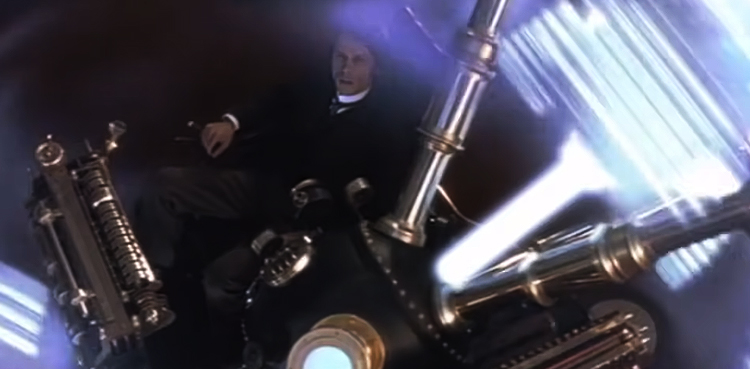
Time travel is an appealing idea as the psyche of human race is obsessed with the urge to travel back in time so that it can witness the lost glories in the ever going-forward time.
In this context, scientists have used single particles of light (photons) to simulate quantum particles travelling through time. They showed that one photon can pass through a wormhole and then interact with its older self. The source of this time travel conundrum comes from what are called “closed time-like curves” (CTC).
CTCs are used to simulate extremely powerful gravitational fields, like the ones produced by a spinning black hole, and could, theoretically, based on Einstein’s theory of general relativity, warp the fabric of existence so that space-time bends back on itself – thus creating a CTC, almost like a path that could be used to travel back in time.
However, many physicists find CTCs abhorrent, because any macroscopic object traveling through one would inevitably create paradoxes where cause and effect break down. Others disagree with this assessment and in 1991 it was showed that these paradoxes (created by CTCs) could be avoided at the quantum scale because of the weird behaviour of these fundamental particles that make up what we call matter.
It is well known that at the quantum scale, these particles do not follow the rules that govern classical mechanics but behave in strange and unexpected ways that really should not even be possible.
Quantum physics undertakes to examine a phenomenon which is impossible, absolutely impossible, to explain in any classical way and which has in it the heart of quantum mechanics as in reality, it contains the only mystery.
The model of CTC is just a mathematical simulation though the researchers emphasise that their model is mathematically equivalent to a single photon traveling through a CTC.
Nothing has actually been sent back through time though; to do that, scientists would have to find a real CTC, which has yet to happen.
Researchers think in terms of the ‘grandfather paradox,’ a hypothetical scenario where someone uses a CTC to travel back through time to cause harm to their grandfather, thus preventing their later birth.
Now imagine a particle going back in time to flip a switch on the particle-generating machine that created it – this is a possibility that these physicists say they have shown through their simulation.
To many researchers there is no doubt time travel is possible because superposition is real on a quantum scale. The maddening part of that problem is that the ability of particles to exist in two places at once is not a mere theoretical abstraction.
It is a very real aspect of how the subatomic world works and it has been experimentally confirmed many times over. One of the supreme mysteries of nature is the ability, according to the quantum mechanics laws that govern subatomic affairs, of a particle like an electron to exist in a murky state of possibility, to be anywhere, everywhere or nowhere at all, until clicked into substantiality.
This means that one particle can exist in multiple states at one time. This is best demonstrated by the quantum double slit experiment. Recent experiments have also confirmed quantum entanglement, showing that space is really just a construct that gives the illusion of separation.
There is a high probability of time travel as is justified by the fact that there are experiments showing that particles can actually be entangled through time. Like the quantum double slit experiment, the delayed choice/quantum eraser has been demonstrated and repeated time and time again.
Physicists have successfully conducted delayed-choice thought experiment. In 2007 scientists in France shot photons into an apparatus and showed that their actions could retroactively change something which had already happened. This particular experiment illustrates how what happens in the present can change what happened in the past.
It also shows how time can go backwards, how cause and effect can be reversed, and how the future caused the past.
If scientists attempt to attribute an objective meaning to the quantum state of a single system, curious paradoxes appear: quantum effects mimic not only instantaneous actionat-a-distance but also influence of future actions on past events, even after these events have been irrevocably recorded.
Although there isn’t access to a CTC just quite yet, there are good reasons to believe that this type of time travel is possible at the quantum mechanical level as ‘time’ does not even really exist as people think it does. Why these same quantum mechanical laws have not been observed on the macroscopic level is yet to be understood but physicists are working on the problem.
In this respect in 2012 physicists David Wineland and Serge Haroche received the Nobel Prize in physics for demonstrating how quantum weirdness could not only exist at the subatomic micro-world level but also show itself in the macro-world.
At one time, superposition was only thought to exist in the inaccessible quantum world but not anymore and it is possible though it is still to be figured out how.
Scientists are however seem to be getting closer to finding out.
Perhaps one day, they will determine the key to this puzzle and be able to observe large objects like cars, humans, apples and oranges behave in the ways that matter does on a subatomic level and perhaps one day they will find a CTC in space to conduct actual experiments that go beyond theory.
https://ift.tt/5p9L1FG
https://ift.tt/Trsua6E




0 Comments